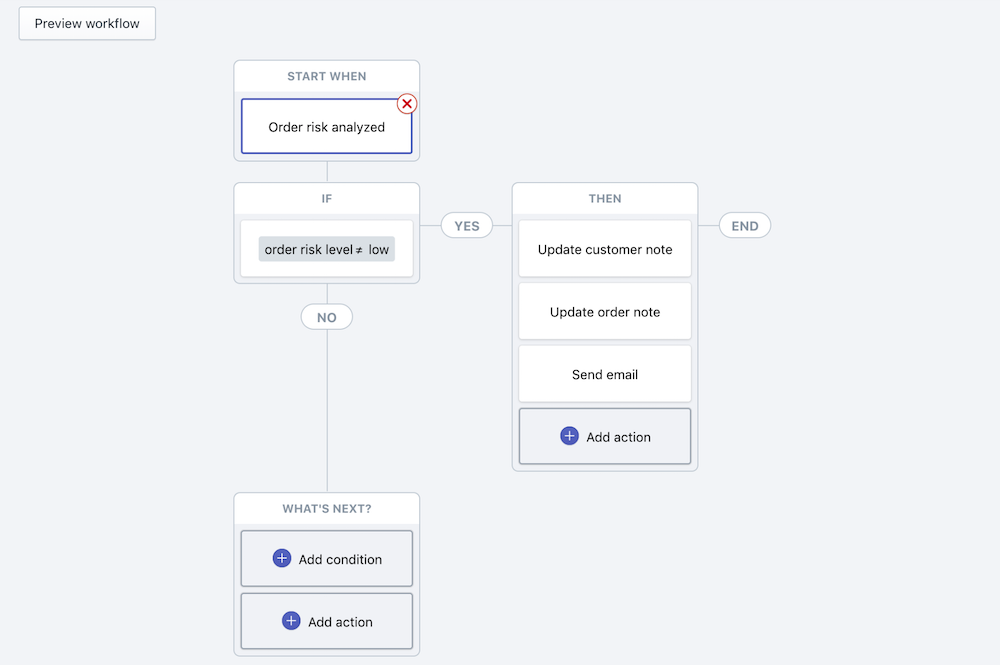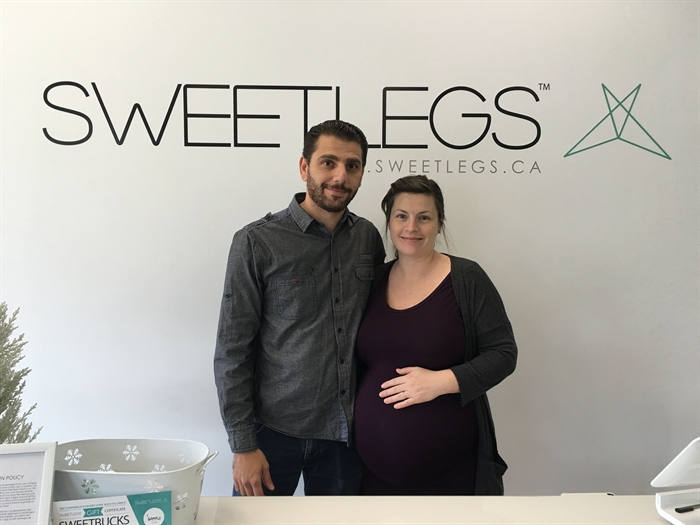- After a Black Friday catastrophe in 2016, when outages cost it six-figures in lost sales, SweetLegs required a new ecommerce partner for the holidays
- In October of 2017, it turned to leave WooCommerce, but SweetLegs was told there was no way its site could be ready by Black Friday Cyber Monday
- The turnaround was ambitious, yet SweetLegs was undeterred. Founder Chris Pafiolis reached out to Shopify, desperate for a fix. There had to be a way …
It was Black Friday, 2016. What should have been the height of his business calendar. And it was all falling apart.
Chris Pafiolis found himself caught in a storm.
Co-founder of SweetLegs, the hit Canadian online and retail leggings brand he founded in 2014 with his wife, Addie, was scrambling. His company was sinking into full-on crisis.
“I was trying to stay calm,” he says. “But as you can imagine, you can’t remain calm when your business, your baby, the business that we’ve put everything into, literally just collapsed in front of you.”
SweetLegs was down. Not just the glitchy, slow-moving, keep hitting refresh kind of down. SweetLegs was all the way offline.
“There was just an error page, basically. ‘Try back again later,’” Pafiolis says. “Too many requests. Too many people. It just choked.”
The Black Friday wipeout, Pafiolis calculated, cost SweetLegs six-figures in lost sales. This was not supposed to happen. Pafiolis had labored to make SweetLegs’ site bulletproof – spending thousands extra each month on better servers for his WooCommerce platform. Then thousands more when those proved inadequate.
“When the $100,000 quotes came in to hopefully fix the issues,” he later wrote, “I decided I was done stressing over uptime and updates.”
He vowed it to himself. When Black Friday came around again, SweetLegs would be ready. But how?

‘I Think It was Almost $6,000 a Month, Just on Web Hosting’
Pafiolis is something of a computer wunderkind.
He holds a degree in product design, has long worked professionally as a web and graphic designer. “I’ve been fascinated by computers since they came out,” he says. “Right out of high school, I was building websites for companies.”
So it was that, when his wife had the itch to found an ecommerce company, Pafiolis was a fitting partner.
SweetLegs was born in the kitchen of the couple’s home, Chris and Addie’s new toddler sitting on the table right alongside them during their early work. The company made waves with its leggings – loud, funky designs customers clamored for right away.

Pafiolis built SweetLegs’ site through WooCommerce, based largely on code used for a platform he’d crafted earlier that his mother was using to sell olive oil.
It was the home party model that set this company ablaze, hordes of individual sales reps growing organically via word of mouth, setting off as ambassadors, and performing plenty of the heavy lifting the brand needed to spark its sales.
“Orders began rolling in the minute we started,” Pafiolis says.

It was all fine. Until it wasn’t.
The signs were there early. Within a year of business, as its home party distributor network grew to 300, SweetLegs’ site stalled each time a new product would launch. Its wholesale buyers – often with hundreds of items in their cart – were unable to properly navigate the site and checkout.
SweetLegs moved toward “bigger and better servers,” Pafiolis says, reaching what he was led to believe was the most advanced solution on the market: “I think it was almost $6,000 a month, just on web-hosting.”
But by Black Friday, 2016, when two full days of the shopping weekend were lost to outages, the capacity that SweetLegs’ WooCommerce site could handle seemed no longer in dispute.
“At that point,” Pafiolis says, “I had started toying with the option of Shopify.”

‘No Matter How Hard We Hammered It, It Did Not Go Down’
Pafiolis, a longtime devotee to WooCommerce and its WordPress backing, resisted change as long as he could.
But as another Black Friday loomed – and as new product launches, no matter his monthly server fees, still bottlenecked the website well into 2017 – the risk of more holiday failure was too grave to bear.
Here was the problem: the calendar had reached October, though Pafiolis wanted to switch ecommerce partners in time for Black Friday Cyber Monday.
The timeline was, to be charitable, ambitious. Switching the site’s backend was one thing, but migrating his data, including all SweetLegs’ customer data, was a monster task.
To do so, Pafiolis was quoted costs upward of $100,000, and it was recommended that several months were required to do things right.
Pafiolis was undeterred. He decided that could not be, and he found the counsel of Shopify Solutions Partner Port80, which said it could get the job done within 30 days.
“We started in the first week of October and it was up the first week of November," Pafiolis says. “In about a 30-day turnaround, we were fully done, launched, up and running, orders coming in.
“What we noticed was – the new Shopify site, no matter how hard we hammered it with our distributors, it did not go down.”
Then, the real test … SweetLegs rolled out a 50% off sale for Black Friday Cyber Monday.
Pafiolis couldn’t help his nerves. A year earlier, when his company announced its Black Friday promotion, only minutes had passed before the crash.
The following four days would confirm no less than the future of this company’s ecommerce fate. Had SweetLegs chosen the right partner?

He Looked For Ecommerce Heartache … But He Found None
Nearly 11,000 SweetLegs orders rushed in during Black Friday Cyber Monday, some 25% of all the orders his site would register in 2017.
Pafiolis looked everywhere, conditioned to ecommerce heartache.
But he found … nothing. Pafiolis sounded more survivor than entrepreneur when he reported: “The site didn’t crash.”
It was, if anything, an embarrassment of riches, a rush of orders so great that it overwhelmed SweetLegs’ warehouse staff. To get all its shipments out in a timely manner, Pafiolis upgraded most to express shipping at a considerable cost to the company – $20,000 at least, he figures, out of SweetLegs’ coffers.
But these were the kind of good problems that SweetLegs was in part relieved to have.
Now, Pafiolis wasn’t apologizing to customers for the shortcomings of his site’s uptime. Suddenly, his greatest concern was how to get all these orders packed up and ready to send.
“Yes, the shipping was a cost, but these were our customers,” he says. “What kind of experience do you want them to have?”

Growth, Guided by Ecommerce Automation
What a rush it was. From ecommerce chaos to backend reliability in 30 days. In its first month on Shopify alone, some $2 million in sales came through, a company record.
“It was,” Pafiolis says, “two completely different ball games.”
SweetLegs continues in its growth. It has recently reached into the U.S. market for the first time, where its brand has plenty of room to find a new audience through targeted ads on Facebook and Instagram.
Pafiolis is also considering using Swell, the Shopify app, to develop a rewards program to boost shopping incentive, showing some more love to his most loyal customers.
And automation has become its friend. SweetLegs is using three of Shopify’s proprietary ecommerce automation tools:
- With Launchpad, the company has run over 15 onsite campaigns in the last year, generating more than $857,000 on autopilot
- With Shopify Scripts, it has automated checkout features, like wholesale discounts and shipping updates
- With Shopify Flow, it has offloaded a host of backend processes, like parts of its inventory management, payment tracking, and mitigating at-risk orders

Sales Up 40%, New Black Friday Records In Sight
Life is a little sweeter these days. SweetLegs’ website works the way it should, and, since migration, business is booming. During the first two quarters of 2018, sales are up 40% year-over-year.
“We’ve been killing it,” he says, and perhaps that is no exaggeration. At home, life is sweet, too. Addie is pregnant with her and Chris’ sixth child.

This couple is in control, and control has long been where it works best.
Years ago, when SweetLegs opened its first retail store in British Columbia, Chris and Addie hired a team of architects to design and build a beautiful space.
In the end, they found the job was better done themselves. “We eventually handed them a file and said, ‘Here, build this,’” Pafiolis says. “Everything’s kind of the same now. We’re still involved throughout every aspect of the business. It’s kind of how it goes.”

They are there every step of the way, though today those steps are made with a little more confidence than before.
As Black Friday Cyber Monday 2018 grows nearer, Pafiolis’ worries will no longer be on SweetLegs’ backend. Instead, considering the company’s growth trajectory, his focus has turned to fulfillment – mainly, training the new night crew he has hired to get out the 30,000 orders SweetLegs has targeted over the holiday weekend.
“That number,” he says with a smile, “terrifies the hell out of me.”
It’s a challenge Pafiolis now confronts with much greater ease.
“So long as you’re in business, it’ll always be stressful,” he says. “But you want to pick the right stress. Finally, that’s what we have found.”
Read more
- How an Organic Beauty Brand Automates International Ecommerce in 12 Countries
- LeSportsac Grew Orders 37%, Sales 12% through Multi-Channel Ecommerce & AI
- How Whimsy Rose Uses the Shopify Plus API to Co-Create Personalized Fashion With Customers On Demand
- How Accelerated Midnight Product Launches & Shopify Plus is Helping NOBULL Challenge Billion Dollar Footwear Giants
- How BoardwalkBuy Used the Shopify Plus API to Custom Build the Ultimate Flash Sale Site
- How a Music Industry Marketing & Technology Agency Uses Shopify Plus to Grow Direct-to-Fan Sales
- [Case Study] How Lauren James Co. Used Shopify Plus to Rapidly Grow Brand Awareness & Sales
- How DailySteals.com Used Shopify Plus to Resurrect Itself from the Dead & Generate Millions in Sales
- How a Broke Fitness Trainer Accidentally Created a Multimillion-Dollar Business Without Advertising
- How World Wildlife Fund Canada Uses Shopify Plus to Protect the Polar Bears


